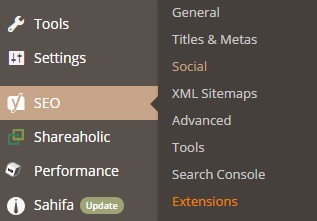

Once you’re connected, all you have to do is simply drag your “export.php” file into the root folder.
#YOAST SEO EDIT SOCIAL MEDIA META SOFTWARE#
Open up your favorite FTP client software (I use CyberDuck) and enter the proper credentials to connect. Next, you’re going to need to connect to the server. While ( $wp_querywpcq1->have_posts() ) : $wp_querywpcq1->the_post() Įcho “\n” If ($wp_querywpcq1->have_posts() & $wp_querywpcq1->found_posts > 0): Save the following snippet as a PHP file named “export.php”. Instead, you’ll have to manually upload a PHP file to your server to get this information.įortunately, we’ve created a PHP snippet that will return the post_id. While you can find the post_id at the page level, the problem is that WordPress’s built in functionality doesn’t allow you to easily export all of a domain’s post_id’s. You can actually see it in the URL when you’re editing a particular page. Simply put, the post_id is a unique number assigned to every page on your WordPress site. We can do this using the WordPress Post ID. In order to import the metadata to the right location, you’re going to need to map it to the proper page. Extract Every Page’s post_id In WordPress Do yourself a favor and avoid this situation by performing a site backup before you start this task. If you end up uploading the wrong data, you could be spending twice as much time going back through every page and manually changing the metadata again. This is especially important if you are going to be changing information on hundreds of pages at once. Backup Your Websiteīefore doing anything concerning changing large amounts of data on a website, it’s always a good idea to perform a site backup first.

Once you have the above items, then you’re ready to begin. FTP & front-end access to the site (must be in WordPress).Items You Will Needīefore you begin, you’re going to need to do a little bit of prep work to ensure that you have all the required information and software to import the data: What we found was a way to quickly import title tags and meta descriptions for clients on WordPress using the Yoast SEO Plugin.

After a while, myself and the WordPress SEO agency here at Go Fish Digital had a discussion on how we could automate this process. While this is easily done manually on a 10 page website, the time it takes to implement them for an enterprise site with thousands of pages could take up many precious hours.įor me, when it came time to add hundreds of title tags and meta descriptions, I knew the process was going to be extremely tedious and time consuming. You still have to actually get them into the CMS. And, unfortunately, just finishing them in the spreadsheet doesn’t mean you are done. Writing or rewriting all of the title tags and meta descriptions, while working keywords into the copy, is a tremendous accomplishment for any mid- to large-sized website. And yet, because of how large of a task it can be, many will procrastinate rather than diving in. Sorry for the delay in my reply, but I’ve been work with my video camera, which was the point of my website in the first place.Quality title tags and meta descriptions are important for SEO. I’ve done those pictures to see if they are allowing me access to those columns that you would expect me to be able to access already. I apologies for the long appearance of my Dropbox link, but I don’t know how you hide them behind a word as a hyperlink. Second: Yeo > Tools > Bulk Editor > Title Page You can enter a new meta-description, so my previous reply was incorrect about that, sorry.įirst: Yeo > Tools > Bulk Editor > Description Page. As I have followed the instructions but the SEO Tools bulk editor still denies me direct access to the ‘SEO Title’, and ‘Keyphrase’ columns in either the Description or Title page in Yeo, in fact they don’t appear at all. Having read both posts I thought I should take some screen shots.


 0 kommentar(er)
0 kommentar(er)
